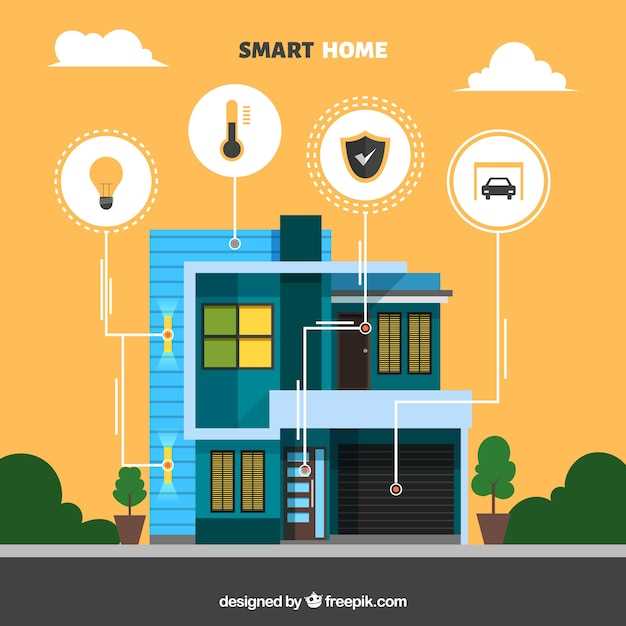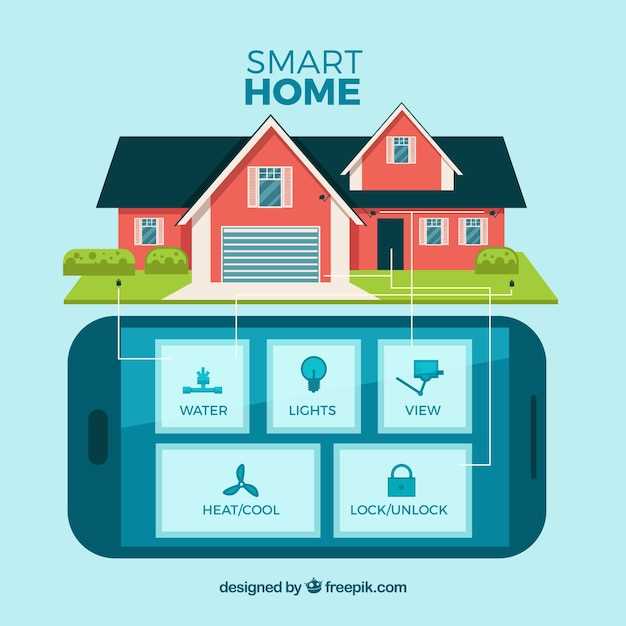Imagine a world where our domestic environments not only cater to our needs but also harmonize with nature. Picture this transformation of living areas into havens of convenience, where every gadget contributes to a healthier planet. We are increasingly aware of our impact. Small changes can create big ripples. When we rethink our daily practices, we open the door to endless possibilities.
These creative transformations encourage us to integrate conscious habits seamlessly into our routines. The novel fusion of comfort and responsibility enhances our lifestyle choices. By adopting modern conveniences, we can improve our lives significantly. However, it is essential to align these advancements with respect for our environment. This delicate balance can lead to a more fulfilling life.
In this context, various innovations play a pivotal role. They not only simplify tasks but also promote alliances with ecological principles. The convergence of everyday tasks with cutting-edge solutions allows us to reflect on the significance of our decisions. Consider how each meal can become an expression of our values while minimizing our footprint.
The result? An opportunity to thrive in harmony with the world around us. By making informed selections, we contribute to a more vibrant ecosystem. This journey toward a conscientious lifestyle is both exciting and rewarding. Together, we can cultivate a culture where the environment and convenience coexist beautifully.
Smart Kitchens & Sustainable Food Choices
In today’s world, the evolution of culinary spaces plays a pivotal role in modern living. People are increasingly aware of their impact on the environment. As a result, there is a growing trend to integrate advanced solutions into cooking habits. This shift is not just about convenience; it also focuses on making conscientious decisions that benefit our planet.
Innovative appliances can significantly reduce energy consumption. They often feature settings designed to optimize usage, catering to individual needs. Furthermore, many modern devices incorporate features to minimize waste. For instance, certain cookers may adapt cooking times based on the actual weight of the ingredients, eliminating over-preparation.
By implementing smart technology, kitchens can become not only more efficient but also aligned with sustainable living principles. This integration of advancements aims to cultivate a lifestyle that resonates with eco-consciousness. The possibilities extend beyond energy efficiency, influencing our connections with the ingredients we select. By utilizing applications that provide insights on seasonal produce and local sources, individuals can make informed selections. These tools encourage purchasing from nearby farms, thus reducing transportation emissions. Additionally, one can explore recipes that highlight these local commodities, creating a cycle of support for community agriculture.
Moreover, there are many options for reducing packaging waste.Trends show a rise in bulk buying, where consumers choose items with minimal or no packaging. Some software solutions assist in meal planning, using inventories to minimize unnecessary purchases. This method not only conserves resources but also encourages creativity in the kitchen.
Ultimately, merging convenience with responsibility fosters a profound connection to what we consume. When culinary environments promote resourcefulness and creativity, they become powerful allies in personal and planetary health.
Innovative Technologies for Eco-Friendly Cooking
In recent years, a wave of inventive solutions has emerged, transforming how we prepare meals. The integration of advanced tools not only enhances efficiency but also prioritizes environmental well-being. Today, many people are eager to reduce their impact on the planet without sacrificing quality. The quest for smarter culinary practices has led to incredible developments.
Devices like induction cooktops offer rapid heating with minimal energy waste. Their precise temperature control ensures that cooking is both effective and resource-conscious. Furthermore, some appliances are designed to optimize the use of leftovers, significantly cutting down on food waste. This approach champions the idea of reusing ingredients creatively.
Moreover, innovative innovations include apps that guide users in recipe selection based on available ingredients, allowing for thoughtful meal planning while minimizing unnecessary purchases and reducing carbon footprints. The rise of multifunctional gadgets, which combine several cooking methods in one device, reflects a movement towards efficiency and ingenuity in meal preparation.
One of the most exciting advancements involves energy-efficient ovens that adapt their settings based on food type and quantity, ensuring that every dish is cooked to perfection while consuming minimal resources.
Additionally, the use of smart sensors and monitoring systems allows individuals to track their cooking progress and energy consumption in real time, fostering a conscious approach to meal preparation. The fun part? Experimenting with fresh ingredients sourced from local farms or gardens. This not only supports community agriculture but also lets enthusiasts explore culinary diversity.
In summary, these pioneering advancements illuminate the path toward responsible culinary practices that benefit both consumers and the environment alike. By integrating new-age devices and strategies into everyday cooking, a harmonious balance between flavor and sustainability can be achieved while nurturing our planet.
Smart Appliances Reducing Energy Consumption

Innovative devices are reshaping how we manage energy use in our homes. These modern solutions provide a pathway towards lower consumption rates. They can enhance efficiency while reducing costs simultaneously. With the right tools, individuals can achieve more with less energy. This transition is not only beneficial; it’s essential for long-term environmental preservation.
These advanced products come equipped with features that optimize performance. They monitor usage habits, allowing homeowners to adjust their routines accordingly. For example, some devices utilize sensors to detect when they’re not in use. This can lead to automatic shutoff, saving both time and electricity.
Furthermore, many devices incorporate energy-saving modes. This setting can significantly decrease consumption during peak hours. By utilizing algorithms and data-driven insights, they adapt to user behaviors. Thus, you can cook, clean, and store without guilt.
Decreasing energy use not only benefits your wallet but also contributes to reducing the carbon footprint. By choosing devices designed with efficiency in mind, owners play a crucial role in promoting environmental stewardship. Every action counts, and every appliance matters, leading towards a collective positive impact globally.
Automation in Meal Planning and Grocery Shopping

Meal preparation and shopping can be overwhelming tasks. They often require time and effort. Fortunately, innovative solutions are transforming these daily routines. With the right tools, individuals can streamline processes and reduce decision fatigue. Modern advancements offer exciting opportunities to change our approaches.
Automated systems simplify meal design. Meal templates can be generated in seconds. These systems take into account personal preferences and dietary needs. By analyzing past choices, they suggest new recipes that are pleasing and nutritious, ensuring every meal is not only satisfying but also aligns with specific health goals.
Shopping can be just as effortless. Imagine receiving reminders when supplies are dwindling. Specific applications can create grocery lists based on selected meals. These lists ensure nothing is forgotten. Some systems even integrate with local markets, enabling direct online purchases. This functionality alleviates the stress of last-minute runs to the store.
Such innovations also promote better resource management.By optimizing inventory, individuals make more informed choices. Automation helps to minimize waste, allowing for smarter consumption patterns that benefit both personal lifestyles and the environment. Ultimately, enhanced planning and shopping methods lead to a more enjoyable culinary experience.
Building a Sustainable Culinary Community
Creating a vibrant culinary network requires collaboration and shared values. It is about fostering connections among individuals and businesses with a passion for ethical practices. When people come together, addressing challenges becomes more achievable. Collective efforts lead to innovative solutions and meaningful changes. Engagement in local initiatives can spark enthusiasm and commitment.
By pooling resources and knowledge, communities can uplift one another. Imagine a space where farmers, chefs, and consumers contribute their insights. Each participant brings distinct experiences, enriching the dialogue. It’s an ecosystem that thrives on mutual respect and understanding.
| Key Elements | Description |
|---|---|
| Collaboration | Working together enhances creativity and availability of options. |
| Education | Sharing knowledge empowers individuals to make informed selections. |
| Innovation | Encouraging fresh ideas leads to sustainable practices and solutions. |
| Support | Building resilience within the community fosters long-term growth. |
When these components align, the atmosphere sparks a sense of unity. Every meal becomes a celebration of values that resonate deeply among community members. The collective journey transforms individual actions into collective impact. It’s not merely about what is consumed, but the relationships cultivated around it. This paradigm shift can inspire future generations to prioritize mindful practices.
Sharing Resources for Zero Waste Initiatives

Creating a culture of shared resources can make a significant impact on minimizing waste. Every small action counts, and collaboration leads to more efficient solutions. By pooling materials and ideas, communities can thrive. Imagine a world where surplus is transformed into collective gain.
People can exchange tools, ingredients, or even knowledge. This reduces the need for unnecessary purchases. It fosters creativity and innovation. When resources are shared, everyone benefits.
Community gardensare an excellent example of this concept in action, where neighbors unite to cultivate their produce, enhancing both quality of life and environmental health, while also ensuring that any excess can be redistributed rather than discarded.
Online platforms have emerged to facilitate this sharing economy. Food swap events, where individuals bring their surplus to trade, are gaining popularity. These initiatives reduce food waste while building social connections.
Additionally, local libraries are expanding their horizons beyond books. Many now offer borrowing options for kitchen gadgets and gardening tools. Participants can enjoy access to resources they might not frequently use.
When individuals come together, they create a ripple effect. This culture of resource sharing revolutionizes how communities interact with one another and their environment. Ultimately, it sets a foundation for lasting change and inspires future generations to adopt mindful practices.
Educating Consumers on Sustainable Ingredients
Understanding the impact of what we consume is essential in today’s world. Many individuals lack awareness of how their choices affect the environment. Knowledge is power, especially when it comes to the items we purchase. Education can lead to more responsible consumer behavior and healthier planet.
The first step is to make information accessible and engaging. This can be done through various channels. Social media platforms, blogs, and community workshops serve as great tools for spreading awareness.
- Use of local produce.
- Choosing seasonal items.
- Understanding labeling and certifications.
- Recognizing the importance of biodiversity.
- Learning about fair trade practices.
By targeting these key areas, individuals can transform their shopping habits, which in turn can have a significant positive impact on ecological balance. It’s crucial to foster a culture where consumers are not only aware of the ingredients they select but also understand the broader ramifications of their purchasing habits on local economies and natural ecosystems.
Hands-on experiences can enhance learning tremendously. Workshops or farm visits allow participants to connect directly with producers. This model creates a strong link between theory and practice. When people see the processes behind cultivation, they develop appreciation and mindfulness about their selections.
- Organize farm-to-table events.
- Provide interactive online content.
- Encourage consumers to support local artisans.
- Highlight success stories of eco-conscious brands.
Such initiatives not only educate but also inspire communities to make informed decisions, thereby nurturing a collective mindset towards environmental stewardship. Ultimately, this shift in perception can lead to significant changes in eating habits and purchasing practices, positively impacting the planet while promoting a culture of wellness and respect for nature.
Video:
Chef Reviews ‘Smart’ Kitchen Gadgets | Sorted Food
Chef Reviews ‘Smart’ Kitchen Gadgets | Sorted Food by Sorted Food 658,073 views 7 months ago 18 minutes
Q&A:
What are smart kitchens and how do they promote sustainable food choices?
Smart kitchens are equipped with advanced technology that helps in the efficient preparation and storage of food. These kitchens often feature appliances that can be controlled via smartphone apps, smart fridges that track inventory, and gadgets that optimize cooking processes to reduce waste. By providing better visibility into what ingredients are available and enhancing meal planning, smart kitchens encourage users to make more sustainable food choices, reducing overbuying and food waste.
How can smart appliances help reduce food waste in my kitchen?
Smart appliances help reduce food waste by utilizing inventory management systems that alert users when items are nearing their expiration dates. For instance, smart refrigerators can send notifications to your phone to remind you to use products that are at risk of spoiling. Moreover, some cooking devices are programmed to adjust cooking times based on the freshness of ingredients. This proactive approach not only minimizes waste but also ensures that meals are made with the freshest ingredients.
Can you provide examples of technology used in smart kitchens that support eco-friendly cooking practices?
There are several technologies commonly found in smart kitchens that support eco-friendly cooking practices. For instance, induction cooktops are energy-efficient as they heat up faster and use less energy compared to traditional gas or electric stoves. Smart ovens can also adjust their cooking processes based on the type of food and quantity, ensuring that energy is not wasted. Additionally, devices like smart pressure cookers consume less cooking time and therefore less energy, further promoting sustainable meal preparation.
What role does meal planning play in creating a sustainable kitchen environment?
Meal planning is crucial in creating a sustainable kitchen environment as it helps individuals make strategic decisions about what to buy, cook, and consume. By planning meals in advance, you can make sure to use ingredients efficiently, thus reducing the likelihood of waste. Incorporating technology, such as apps that suggest recipes based on available ingredients or track what’s in your pantry, can streamline this process. This not only leads to better food management but also supports healthier eating habits and reduced environmental impact.
What are some barriers people face when trying to implement smart kitchen technology for sustainability?
While smart kitchen technology offers many benefits for sustainability, some barriers can prevent people from fully embracing these innovations. High initial costs of smart appliances can be a significant hurdle for many households. Additionally, a lack of technical knowledge can deter individuals from fully utilizing smart features that require setup or frequent updates. Concerns about privacy and data security when using connected devices also present challenges. Finally, the integration of smart devices with existing kitchen setups may require additional planning and can be complex for some users.
How can smart kitchens contribute to reducing food waste?
Smart kitchens utilize various technologies, such as IoT-enabled appliances and inventory management systems, to help track food items and their expiration dates. With features like automatic inventory updates and recipe suggestions based on available ingredients, these systems can significantly reduce food waste. For instance, if you’re aware of what you have on hand and when it will expire, you’re less likely to purchase unnecessary items or forget about ingredients, ultimately leading to more efficient meal planning and consumption.
What are some examples of sustainable technologies that can be integrated into a smart kitchen?
There are several sustainable technologies that can be integrated into a smart kitchen. Some common examples include smart refrigerators that monitor food inventory and send alerts when items are nearing their expiration dates, energy-efficient ovens that optimize cooking times and temperatures, and smart composters that turn food scraps into nutrient-rich compost. Additionally, smart faucets can monitor water usage to reduce waste, and connected devices can help plan meals based on seasonal produce, promoting a diet that is both sustainable and environmentally friendly. Implementing these technologies not only enhances the cooking experience but also contributes to a greener future by encouraging more responsible consumption patterns.